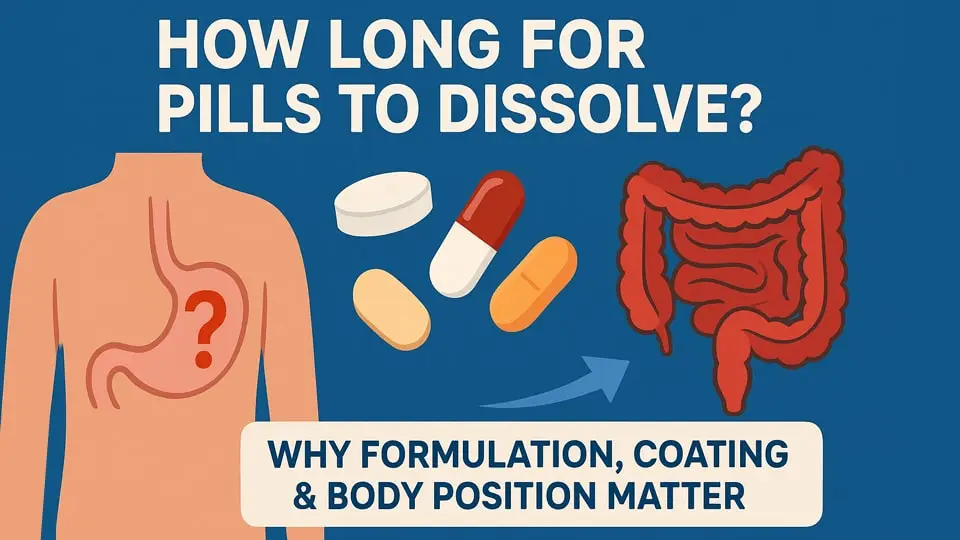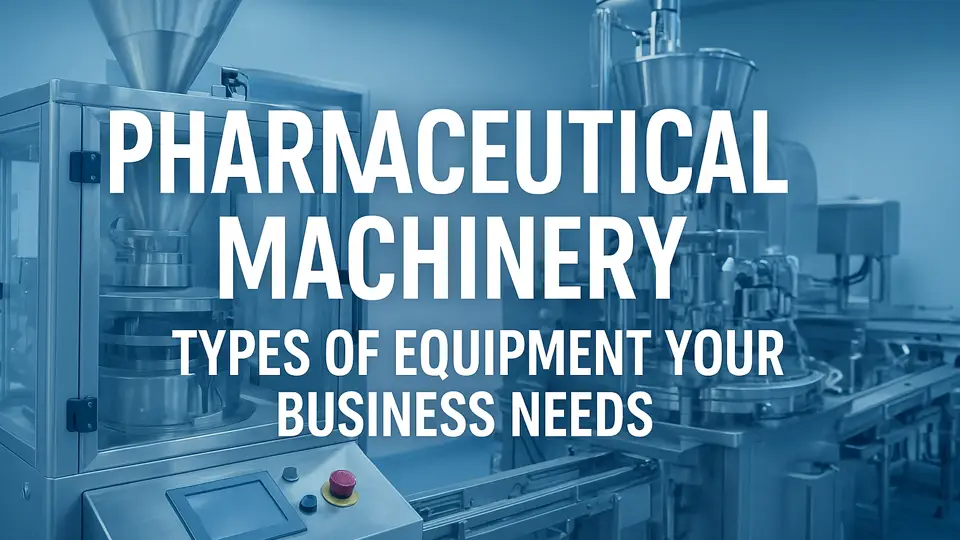
Stick Pack กับซอง: คู่มือขั้นสูงสุดเพื่อความแตกต่างที่สำคัญ
ค้นพบความแตกต่างที่สำคัญระหว่างบรรจุภัณฑ์แบบแท่งและบรรจุภัณฑ์แบบซอง. เรียนรู้เกี่ยวกับการออกแบบของพวกเขา, การผลิต
Thermoformed plastic blisters (as shown below) are commonly used to protect and display small products. These blisters are clear plastic trays formed with cavities (pockets) that hold individual items. The blister is typically sealed against a backing material—such as paperboard or aluminum foil—to enclose each product. This design not only visibly showcases the product but also protects it from moisture, dust and tampering. ตัวอย่างเช่น, the image below shows a medication blister card: a plastic film with molded pockets attached to a printed card. Each pocket (or “blister”) holds a tablet, and the card can be labeled with instructions or branding.

Figure: A thermoformed plastic blister tray. Such blisters are molded from materials like PVC or PET and often sealed with a paperboard or foil backing.
Blister card packaging (also called a slide blister หรือ trap blister) combines a molded plastic blister with a rigid paperboard card. In this format, the plastic film forms cavities for the product, and a pre-printed card is attached as a backing or cover. The card provides space for branding, product information and instructions, and it can include features like hanging holes for retail display. In many designs, plastic flanges on three sides wrap around the card so it can slide securely into the blister. Once assembled, the card and blister form a tamper-evident package: the blister is heat-sealed to the card or held by clips, preventing removal of the product without visible damage to the pack. This packaging is popular in pharmaceuticals and retail because it combines product visibility with sturdy protection and merchandising appeal.

Blister packaging comes in several common types, each suited to different products and uses:
Each type offers different levels of protection, ค่าใช้จ่าย, and convenience. Blister card and face-seal designs provide extra security (tamper evidence), while slide blister cards allow easy assembly and re-closure. Manufacturers choose the style based on product size, shelf-life needs, and branding requirements.

Blister cavities are typically made from clear thermoformed plastics. Common materials include พีวีซี (polyvinyl chloride) และ สัตว์เลี้ยง (polyethylene terephthalate) for good clarity and stiffness, และ PP (polypropylene) when higher heat resistance is needed. PVC-based films (with or without PVDC coating) are widely used because they form easily and clearly show the product. PET is more recyclable and has excellent transparency, while PP tolerates higher temperatures. For the lidding material, manufacturers often use อลูมิเนียมฟอยล์ หรือ coated paperboard to seal the blister cavity. PVC/PET films are heat-sealed to foil to create a moisture- and oxygen-resistant package. (Cold-form aluminum laminate is also used in some pharmaceutical blisters for superior barrier properties.) โดยรวม, material choices balance clarity, barrier performance, และค่าใช้จ่าย.
Specialized blister card packing machines automate the assembly of blister cards. These machines take the blister sheets (with products loaded in advance), pick and place the first card, position the blister, add a second card, and then heat-seal or clamp the layers together in one continuous process. One common workflow is: an automatic feeder supplies a cardboard backing, a plastic blister (with tablets or items inside) is placed on it, and then a top card is aligned and pressed in place. Heat or ultrasonic sealing units then bond the blister to both cards. ในที่สุด, the machine cuts or ejects the sealed blister-card units. Modern systems are fully servo-driven, achieving precise alignment (to within 0.1 mm) and synchronized motion. JinLupacking notes that our machines meet European/CGMP standards, ensuring each blister card is perfectly formed and sealed. These machines can handle high speeds (sealing thousands of cards per hour) and multiple size formats by changing molds and adjustment slides.
[jl_youtube src=”https://www.youtube.com/embed/YqYM4hoCUuw”]
Blister card packaging offers many advantages for pharmaceutical and retail products:

Figure: An example of medication blister cards (unit-dose packaging) used to organize daily doses. Each pill is sealed in a blister cavity attached to a labeled cardboard sheet.
These benefits make blister card packs extremely popular for pharmaceuticals (แท็บเล็ต, แคปซูล, วิตามิน) และสินค้าอุปโภคบริโภคขนาดเล็ก (electronics accessories, tools, เครื่องสำอาง, ฯลฯ). By offering visibility, protection and branding in one package, blister card packaging is a versatile solution across many industries.
ในอุตสาหกรรมยา, blister card packaging is a standard for tablets and capsules. Unit-dose blisters help ensure accurate dosing and drug integrity. They are widely used for prescription drugs, over-the-counter medicines, และวิตามิน, often in multi-dose calendars or prescription-packed cards. Because each dose is sealed, patient compliance can be tracked (torn blisters indicate pills taken). The tamper-evident nature also supports regulatory requirements for drug safety.
Beyond pharma, blister cards are used for products like batteries, earbuds, hardware parts, เครื่องสำอาง, และอีกมากมาย. ตัวอย่างเช่น, electronics or toy accessories often come in แพ็คแผลพุพอง hanging from retail displays. The rigid card holds the plastic blister and provides hook or slot options for merchandising. In automotive or hardware, small parts (fuses, screws, fuses) are sold in blister card packs to keep them organized and visible. In each case, the packaging both markets the product and protects it in transit.
Blister card packaging is ideal whenever a high-security, shelf-ready package is needed for small items. It offers traceability (via printed lot numbers on cards), child-resistance (with peel-tear seals), and can be made compliant with global GMP and FDA standards. Leading machine manufacturers (like Jinlu Packaging) design blister card solutions to meet these strict pharma and retail demands, enabling stable high-volume output and consistent quality.
By understanding these aspects, manufacturers and marketers can leverage blister card packaging to protect products, inform consumers, and meet regulatory needs. With the right machinery and materials, blister cards become a highly effective packaging solution in the pharma and packaging industries.
Blister Card Packaging is a form of packaging that pairs a thermoformed plastic blister (with cavities or pockets for individual items) with a rigid paperboard or foil printed card backing. The card provides branding and product information; the blister offers clear visibility and protection.
The blister portion is typically made from plastics like PVC, สัตว์เลี้ยงหรือ PP (for clarity, barrier or heat-resistance). The backing card is usually paperboard (or a foil-laminate) that is printed and properly coated for sealing. Together they form the blister card unit.
Common types include slide/trap blister cards (cards into which the blister slides), face-seal blister (blister heat-sealed to the card), clamshells (hinged plastic halves) and blister trays (just a tray without card). Blister card packaging (the card + พุพอง) offers a mix of display, protection and branding.
A blister card packaging machine automates the assembly of blister cards: feeding blister sheets, inserting printed cards, aligning and sealing them (via heat, ultrasonic or mechanical clamps). Such machines ensure precision, high speed and consistent quality in manufacturing blister card packs.
In pharma, blister card packaging is ideal for unit-dose tablets or capsules because it offers product visibility, เหตุการณ์ที่เกิดขึ้น, individual dose isolation, protection from moisture/oxygen/light (depending on materials), and supports patient compliance and regulatory requirements.
For retail goods, blister card packaging provides: clear product visibility on shelf; dedicated branding space on the card; hanging or display options; protection during transport; เหตุการณ์ที่เกิดขึ้น; compact and cost-effective for high-volume runs.
Key factors include: product sensitivity (ความชื้น, แสงสว่าง, ออกซิเจน), required shelf-life, visibility versus barrier needs, printing/branding requirements on the card, production speed and cost, and the suitability of the packaging machine/mold format.
ใช่. From a security viewpoint blister cards can be tamper-evident, which is critical in pharma and high-value retail segments. From a sustainability angle, selecting recyclable plastics (เช่น, สัตว์เลี้ยง), reducing material waste through efficient machine formats, and using printed cards designed for minimal extra packaging helps improve the eco-profile.
Some challenges include: tooling and mold costs (especially for custom blister cavities); material selection trade-offs (high barrier vs cost/visibility); recycling complexity (some plastics or laminates are harder to recycle); machine setup and changeover when variant sizes or formats are needed.
The typical steps include: defining product dimensions and sensitivity; selecting blister material and card backing; designing the blister cavity and card print layout; choosing or specifying the blister card packaging machine; prototyping and testing seal integrity, product fit, visibility and barrier performance; then scaling in full production.

ค้นพบความแตกต่างที่สำคัญระหว่างบรรจุภัณฑ์แบบแท่งและบรรจุภัณฑ์แบบซอง. เรียนรู้เกี่ยวกับการออกแบบของพวกเขา, การผลิต

เรียนรู้ว่าบรรจุภัณฑ์พุพอง Alu-Alu คืออะไร, มันถูกสร้างขึ้นมาอย่างไร, และเหตุใดจึงให้ความชุ่มชื้นที่ไม่มีใครเทียบได้

เรียนรู้วิธีการกำหนดสูตรยาเม็ด, การเคลือบและแม้กระทั่งท่าทางของร่างกายสามารถส่งผลกระทบอย่างมากต่อระยะเวลาในการ

ค้นพบเครื่องจักรด้านเภสัชกรรมที่จำเป็นต่อธุรกิจของคุณ, ตั้งแต่เครื่องอัดยาเม็ดไปจนถึงเครื่องบรรจุแคปซูลและบรรจุภัณฑ์ยา
ทุกผลิตภัณฑ์และโรงงานต่างมีความท้าทายและสถานการณ์ด้านบรรจุภัณฑ์ของตัวเอง. เราพร้อมให้ความช่วยเหลือเรื่องเครื่องจักรรับประกันคุณภาพ, โซลูชันที่กำหนดเอง, และบริการที่ไม่ยุ่งยากที่สุด.
ลิงค์ที่เป็นมิตร: การบรรจุที่หลากหลาย | ผู้ผลิตเครื่องบรรจุแคปซูล